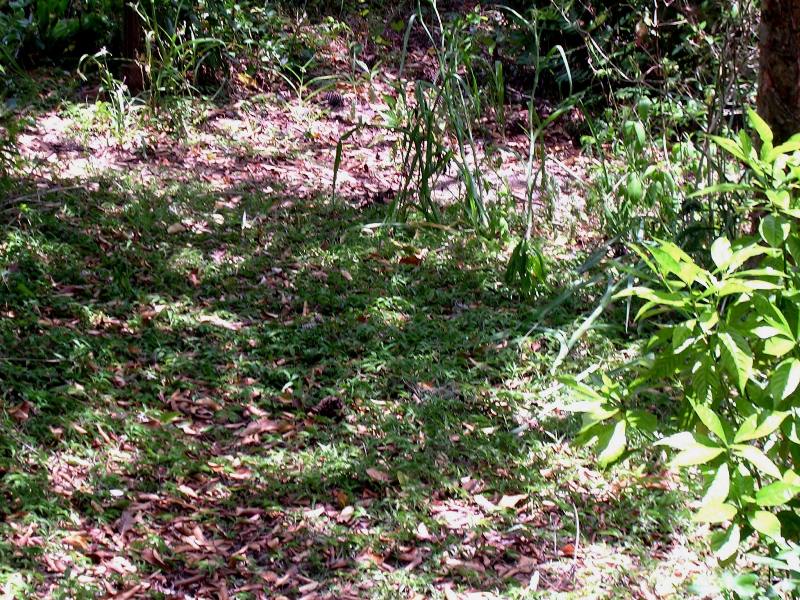
Basketgrass
Oplismenus hirtellus subsp. setarius
Basketgrass is a low growing native grass. It stays below three inches tall, has up to three inch long leaves and creeps along the ground creating a moderately dense groundcover for shady, moist areas. The seedheads can reach almost 12 inches tall in the fall and provide food for seed eating painted buntings just when they arrive for the winter.
The seeds are a bit sticky and tend to cling to dog hair, but are not hard to remove. This plant is found naturally from the Keys to North Carolina along the coast and in inland hammocks. Port Mayaka Trail along the eastern side of Lake Okeechobee has beautiful beds of basketgrass in some areas.
During a drought, basketgrass will die back, yet it returns with a vengeance with the summer rains. If you have a shady oak that other grasses won’t grow under, try planting a few patches of this. It will soon spread to other shady portions of the yard.
There is an invasive look alike called Wavyleaf Basketgrass that should not be planted. Click here for more info. I have had native Basketgrass on my property for over 15 years and have never had it come up in an unwanted location. It covers my shady paths and the bare areas under my oaks and other shade trees.
If you are tired of mowing under your trees and want a soft grass that takes moderate foot traffic, this is a great choice. Sometimes a plant labeled as a lawn weed is actually tough enough to replace your lawn with.
Take a look under a natural stand of oaks the next time you go on a hike and you will probably find that there is a nice green cover of this along with witch grass and ferns.
Here is an interesting thread of comments about this native grass. Click here.